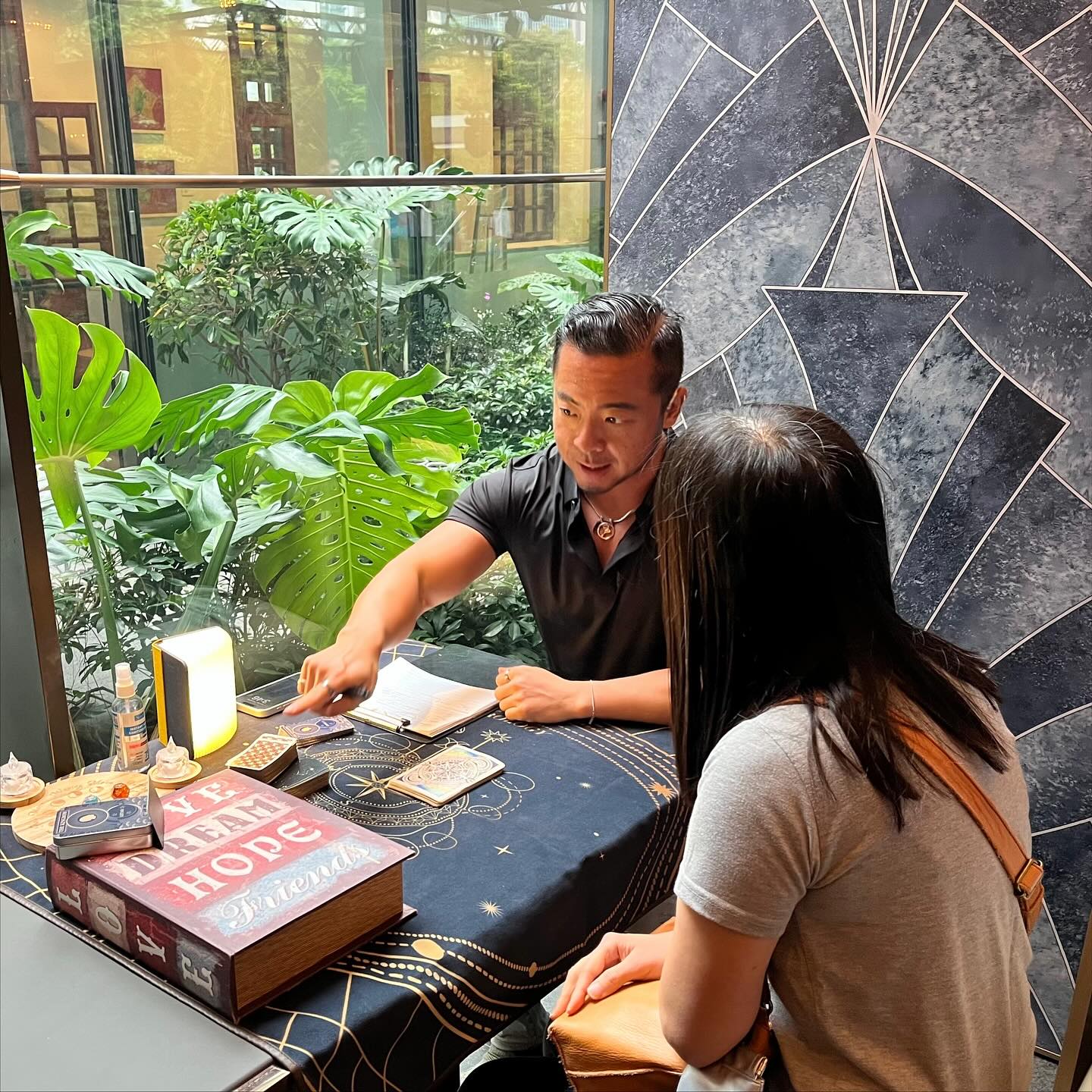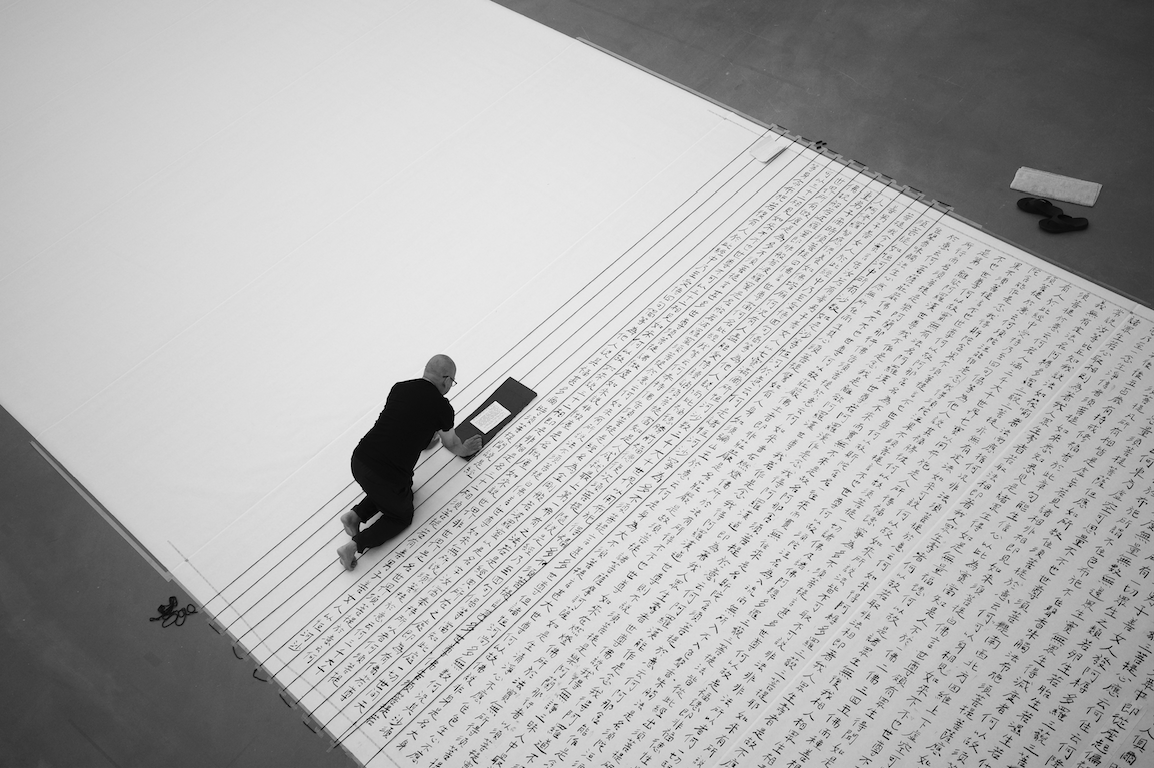Luxury hotel group Belmond has joined forces with celebrated French conceptual artist Daniel Buren for this year’s Mitico art installation series, featuring six site-specific works capturing the essence of their unique destinations. Haley Sengsavanh reports
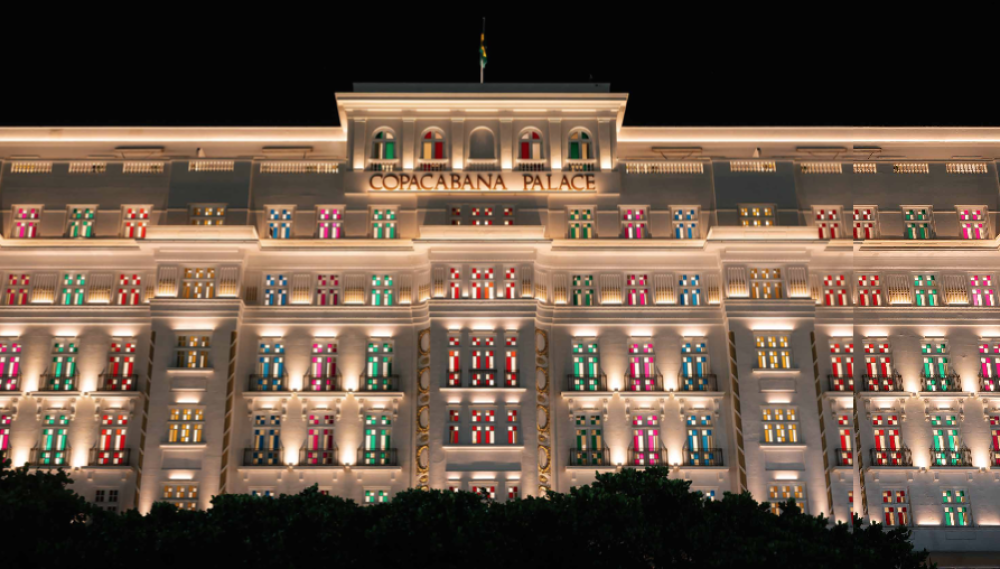
Daniel Buren boasts a successful career spanning decades. The 86-year-old French conceptual artist is best known for his outdoor art installations that are created in situ (a term Buren favours to describe the relationship between his work and the sites where they are presented), making him the perfect choice for luxury hotel group Belmond’s innovative Mitico art installation series.
The Belmond legacy began in 1976 with a hotel in Venice, but has since grown to include 46 properties spread across 26 countries. The brand describes itself as “proud custodians of storied properties… committed to building on the past to create a new legacy: the heritage of the future”. As a pioneer of the slow travel movement, it aims to provide enriching and indulgent sanctuaries at which guests can unwind.
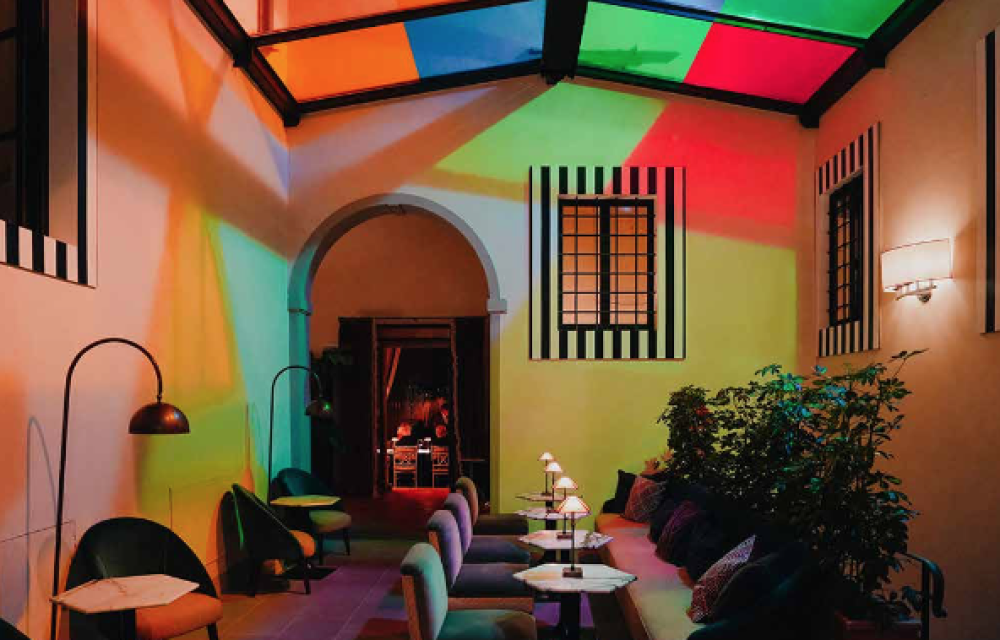
What better way to encourage relaxation and introspection, while highlighting culture and beauty, than to bring original works of art right to guests’ doorstep? Belmond’s Mitico artist series fits right in with its brand identity and company goals. Each year, the invited artists not only have to create works around a theme, but each must also be uniquely suited to the individual Belmond property at which it will be showcased. This incredible opportunity not only challenges artists to think outside the box, but also provides guests with a completely one-of-a-kind art viewing experience.
This is Belmond’s third season operating in collaboration with Galleria Continua. In 2022, Mitico invited creators such as New Delhi-based contemporary artist Subodh Gupta and Cameroonian visual artist Pascale Marthine Tayou to reflect upon different ways of viewing the world. The following year, a new cohort of seven prominent artists (including Cuban sculptor Yoan Capote and Chinese contemporary artist duo Sun Yuan & Peng Yu) created works that considered the relationship between humans and identity, belonging and nature.
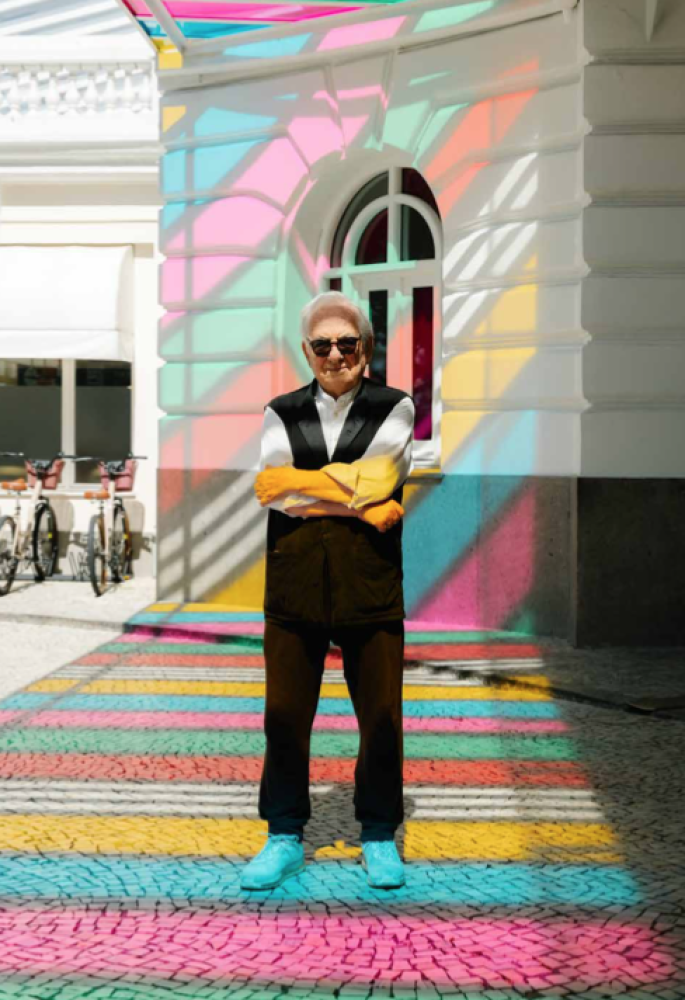
In 2024, for the first time ever, Mitico has invited a single artist to tackle the monumental project of designing six works of art to suit six different venues. Buren’s approach was to let each location speak to him, and lean on the natural surroundings and culture for inspiration. The destinations included Mount Nelson in Cape Town, Copacabana Palace in Riode Janeiro, Villa San Michele and Castello di Casole in Tuscany, Hotel Cipriani in Venice, and La Residencia in Mallorca. “These six hotels are all very different,” Buren says, “so each piece will be as well.” The “common thread” tying all these works together is the use of colour, hence the series title Haltes Colorées, which translates to “Colourful Halt.”
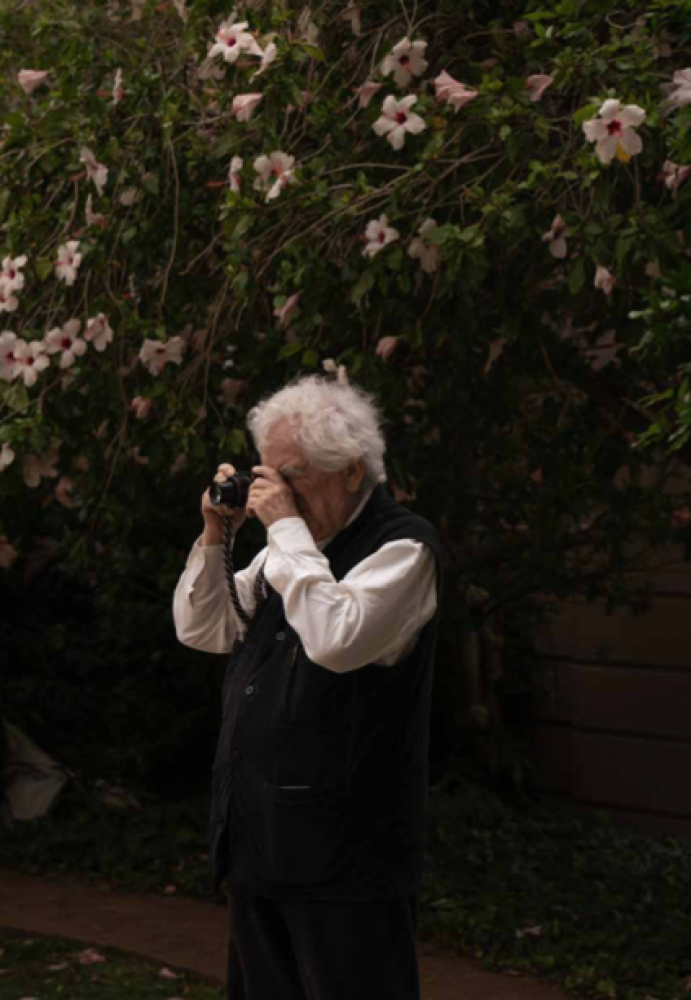
At Mount Nelson, Buren has chosen to highlight the central fountain in the gardens by encircling it
with eight colourfully striped and mirrored poles. His approach for Copacabana Palace was to cover the pergola and the windows facing the Atlantic Ocean with coloured vinyl, creating two different effects. Buren explains, “The pergola, playing with natural light, has its colours projected onto the floor and walls of the entrance during the day. The façade, on the other hand, is illuminated by electric light in the evening.” At Castello di Casole, Buren put the spotlight on the scenic Tuscan views by constructing a large striped frame to be placed outdoors. Meanwhile, at Villa San Michele, he worked on one specific room, drawing attention to its historic architecture by placing colourful sheets atop the glass roof and filling the space with rainbow light. At Hotel Cipriani, Buren focuses again on the outdoor fountain, but instead constructs a colourfully-panelled ring around it. Lastly, at La Residencia, Buren pivots his attention to the terrace of the 16th-century building.
While creating this many different works might seem like an unsurmountable task to some, creating show-stopping site-specific art is far from uncharted territory for Buren. He began his art career in the 1960s, abandoning his original practice of painting for in situ works that would often feature his signature stripes. When reflecting on why he was drawn to this style, Buren says, “For me, a work without a location doesn’t exist. Since the beginning of my career, this practice has enabled me to avoid using a studio. My studio, in fact, is the place where I am.”

His work is now globally celebrated and he has won many prestigious awards such as the International Award for the Best Artist, Grand Prix National de Peinture, and the Praemium Imperiale. But it wasn’t always this way. In the early days of his career, Buren faced criticism and even censorship for his unusual and audacious art installations. For example, in 1971, Buren created a striped banner to be hung on the Guggenheim Museum’s building during an international group show. “My work was censored under pressure from a few artists on the eve of the opening and without warning to me,” he recalls. “Virtually no one in New York knew of my work, with the exception of the other artists invited, and I had placed it right in the middle of the building, which was something that had never been tried before. Censorship was therefore absolutely total!” Throughout his career, Buren has also stood up for peers who faced similar treatment. In 1974, he was featured in a group show at a gallery in Cologne, Germany. After Hans Haacke wasn’t allowed to exhibit, Buren pasted a facsimile of Haacke’s work atop his own. “If the German authorities wanted to destroy Hans Haacke’s work, they had to destroy mine at the same time, and make this censorship obvious,” Buren says. “This is what they did, and it is what led the public and all the other artists to witness censorship by destroying two works at the same time.”

Ultimately, Buren was able to turn all this controversy around to his favour. One of the works that created the most outrage is now one of his most beloved. In 1985, he was commissioned by the then culture minister to create Les Deux Plateaux (also known as Colonnes de Buren) at Paris’s Palais Royal. This 3,000-square-metre work consists of striped black-and-white columns of differing heights spaced out in a grid across the palace’s courtyard. It was widely criticised and led to a widespread debate on the compatibility of contemporary art with historic buildings. “The opponents did not achieve their goal, which was the outright destruction of my project,” Buren says. “Their hysterical opposition turned to my advantage, given that it is now one of the most visited places in Paris, and therefore one of my most famous pieces.”
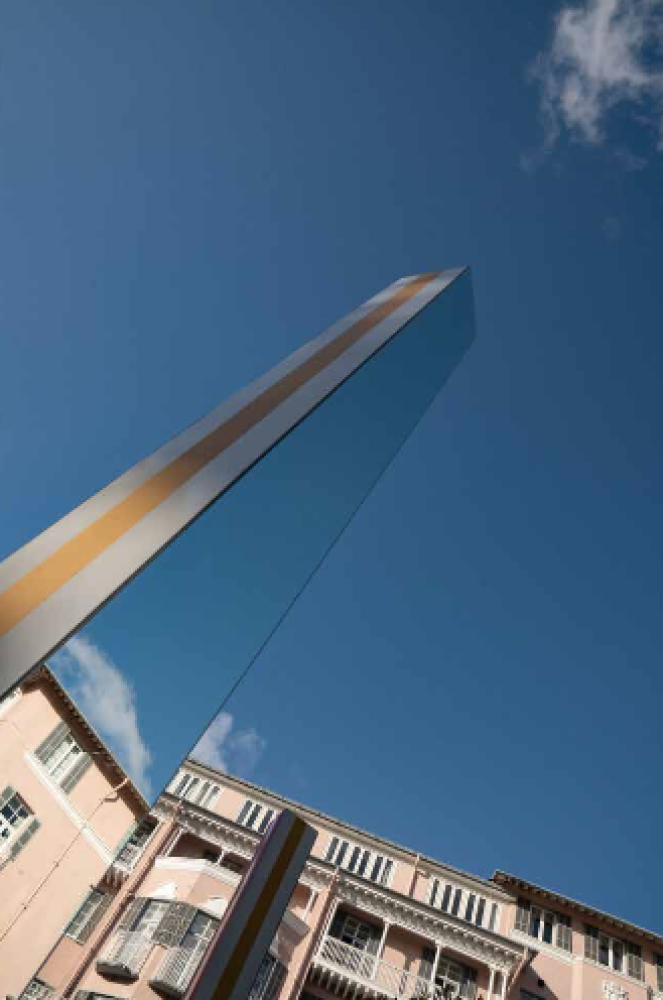
Despite having shown his works at galleries and public spaces all around the world, Buren relishes
his chance with Belmond to create one collection of connected works that is spread out across the globe. “This is a kind of grand exhibition, where the works can only be discovered by travelling an enormous distance from the north of Italy to the south, then on to South Africa, then back to a Mediterranean island to end the journey on the splendid Atlantic beach in the middle of the city of Rio.” Given his highly-regarded reputation for creating works in situ, it’s no wonder Buren was chosen
as the featured artist for the Mitico series. Even he agrees it’s a match made in heaven. “The situation is quite exceptional in terms of the venues available, but the possibilities for producing the work are very close to the particular and constant exercise that drives me, almost on a daily basis,” he says. “The originality here lies in the request to produce works that are all different, but linked each time not only to the place where they will be shown, but also being part of the same chain of hotels.”
Also see: Belmond and Galleria Continua revitalise historical sites with art



